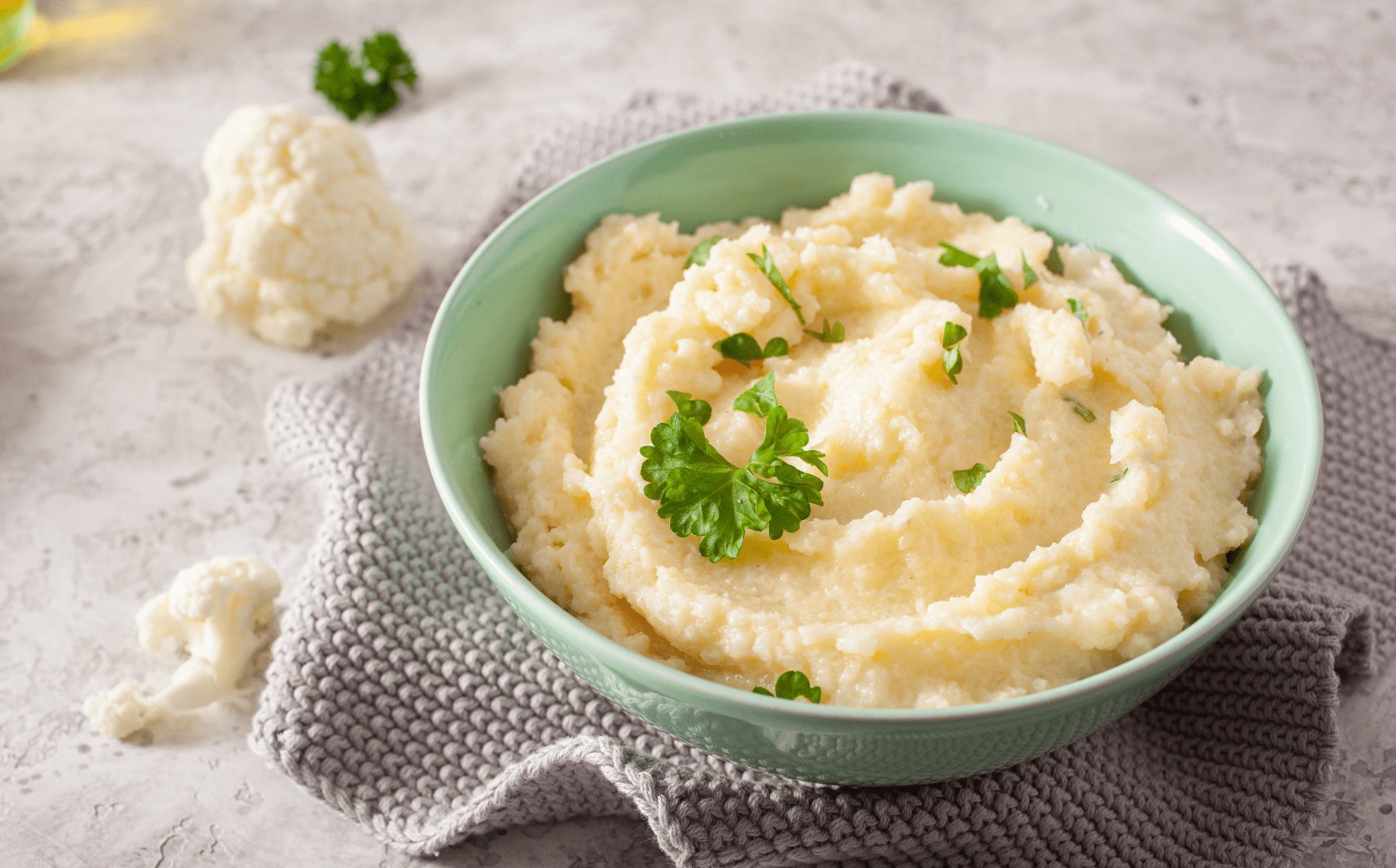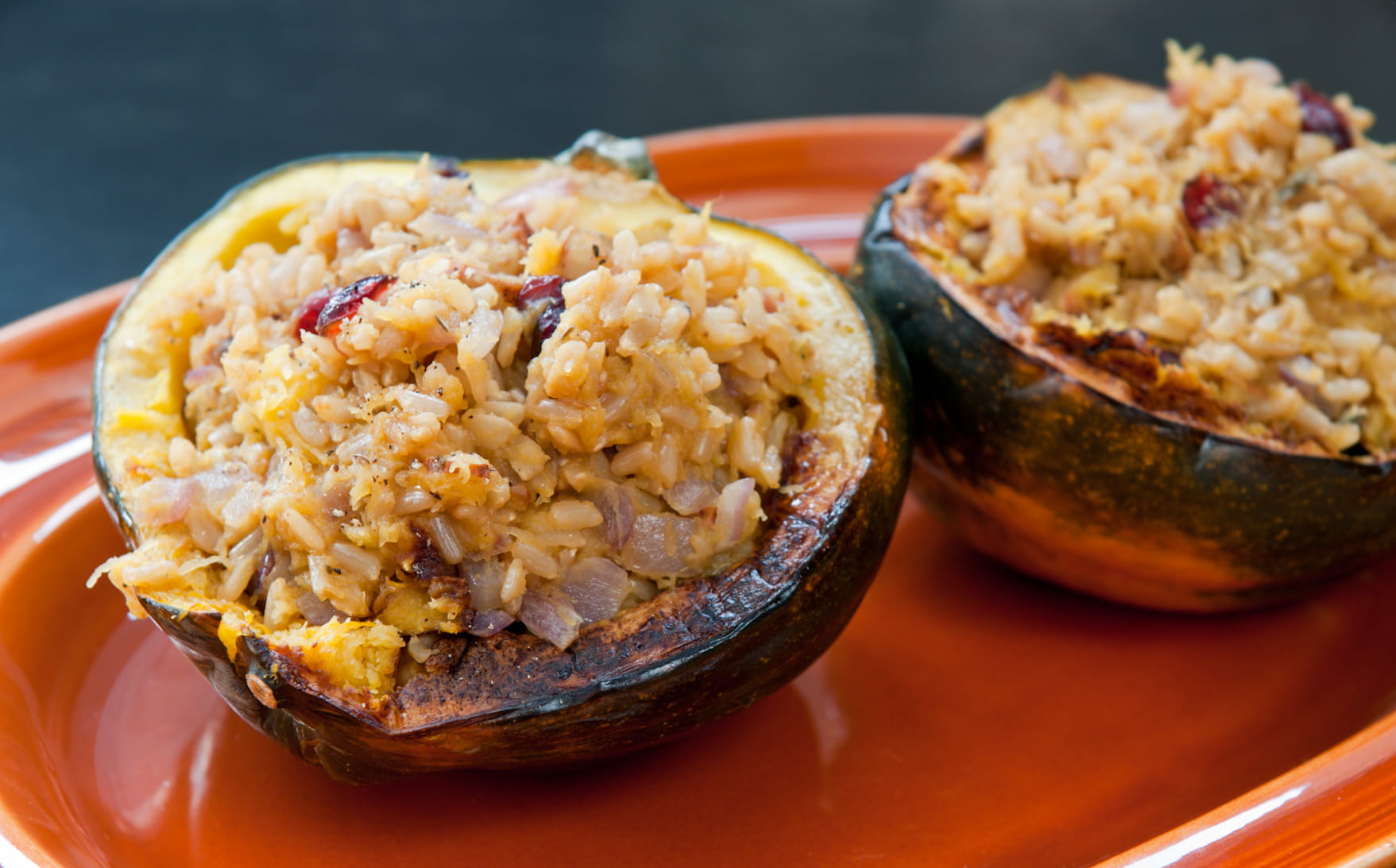Veganism. Vegetarian diets. Plant-based lifestyles. You may recognize some of these terms that have grown more popular over the last few years. According to a study from Nielsen IQ, nearly 40 percent of Americans are making efforts to eat more plant-based foods.
While some people shift their food consumption away from animal products because of their beliefs, a growing number of people are doing it for their health. A study published in Nutrition Reviews reports vegan and vegetarian diets to be highly effective for weight loss, and that those who follow these diets have lower rates of heart disease, high blood pressure, diabetes, and obesity.
If you are one of these people, or are spending this holiday season with these people, you may find yourself in need of a few plant-based holiday dishes. The Lifestyle Medicine team at Rochester Regional Health, provides a variety of tips, tricks, and recipes to help you get started with plant-forward holiday cooking.
What is whole food plant-based cooking?
Whole food plant-based cooking is a diet comprised of fruits, vegetables, whole grains, beans, nuts, and seeds. Folks following this diet avoid processed foods (like white flour, sugar, and oil) and animal products (meat, dairy, eggs, and fish).
A whole food plant-based diet is one of the quickest and most effective ways to improve health. It’s the only diet proven to prevent and reverse heart disease, it helps patients reach a healthy weight, lower blood sugar, and much more.
Plant-based substitution guide
Traditional holiday cooking often means classic holiday recipes passed down from generation to generation. If you’re looking to craft the same delicious food with plant-forward cooking, here are a few basic ingredient substitutions you can adopt.
- Milk: Substitute regular milk for a plant-based alternative. Coconut milk works best for sweets, and almond or soy milk work best for dinner recipes. Be sure to check the label and choose products with no added sugars or oils.
- Cheese: Try to avoid cheese substitutes that are heavily processed with “fake cheese” ingredients, such as soy isolated protein. Tofu, nut butter, and nutritional yeast are great ingredients to use in place of cheese.
- Oils or butter: Using vegetable stocks and water when sautéing or frying foods.
- Meat: Tofu and beans are great protein sources to substitute for meat. Always read labels and avoid heavily processed meat substitutes, as they can be high in salt and saturated fat.
Whole food plant-based holiday recipes
If you plan on cooking one or more plant-based dishes this holiday, whether for yourself or someone at your holiday table, there are many ways to craft delicious plant-based variations of holiday classics.
The Lifestyle Medicine team shares a few whole food plant-based recipes of her own:
- Mashed potatoes and gravy
- Roasted stuffed acorn squash
- Pumpkin pie
- Plant-based Thanksgiving entrée
Plant-based mashed potatoes and gravy
Serves 6-8

Mashed potatoes ingredients:
4 lbs. russet potatoes, peeled and chopped into 2 in. pieces
1 bag of frozen cauliflower florets (16 oz.) or 1 head cauliflower, cored and chopped into large florets
1/4 cup raw cashews
2-4 tbsp. almond milk unsweetened
1 tbsp. nutritional yeast
1 tbsp. tahini
4 cloves garlic, peeled
1 tsp. salt
Mashed potatoes instructions:
- In a large saucepan, cover cauliflower florets with water by 2 inches. Add cashews and garlic cloves.
- Bring to a boil, then reduce heat to medium-high and cook for 6-8 minutes, or until cauliflower is easily pierced with a fork.
- Strain the water off and remove the cauliflower, cashews, and garlic to a blender or food processor and let cool.
- To the same pot, add the chopped potatoes and cover with water by at least an inch.
- Bring to a boil, then reduce to medium heat and cook potatoes for 8-10 minutes, or until a fork goes through a piece of potato easily.
- Turn off the heat, drain the potatoes, and return them to the hot pot.
- Add the ingredients in a blender, add salt, nutritional yeast, almond milk, and tahini.
- Puree the cauliflower sauce until smooth and creamy.
- Mash the potatoes with a potato masher or electric mixer until smooth.
- Mix in the sauce gently, taking care not to over mix and make the potatoes gluey.
- Season to taste with salt and pepper.
Gravy ingredients:
2 cups vegetable broth
3/4 tsp. onion powder
¼ tsp. Smoked paprika
1 tbsp. Low sodium vegan chicken seasoning (Loris Natural Foods)
3 tbsp. nutritional yeast
1 tbsp. tamari or soy sauce
1/2 tsp. Dijon mustard
1/4 cup all-purpose flour (or use brown rice flour for gluten-free)
Gravy instructions:
- Add all ingredients to a medium-sized pot and bring to a boil.
- Whisk over medium-high heat for a couple of minutes, until the gravy thickens.
- Serve with mashed potatoes. This gravy keeps well for up to a week in the fridge. Just re-warm, add a little water if too thick, stir and serve.
Whole food plant-based roasted stuffed acorn squash
Serves 4

Ingredients:
4 acorn squash
1.5 tbsp. coconut sugar
1 onion chopped
2 shallots chopped
5 celery stalks diced
1 tbsp. Thyme
2 2/3 cups cooked wild rice
1 cup toasted pecans
6 tbsp. dried cranberries
¼ tsp. salt & pepper each
Instructions:
- Cut acorn squash in half, scoop out seeds, and pulp.
- Pierce hollowed squash with a fork several times to allow steam to escape.
- Place cleaned halves in baking dish and fill the dish with ½ in. water.
- Roast in oven at 400° for 20 minutes.
- Sauté all veggies in vegetable broth or water over medium-high heat.
- Avoid steaming the veggies by adding only a little water or broth to the pan at a time and waiting until it evaporates before adding more.
- Mix in rice, nuts, and cranberries.
- Fill squash and bake in oven for another 20 minutes.
Whole food plant-based pumpkin pie

Crust ingredients:
2 cups rolled oats
2/3 cup pitted dates packed
1/3 cup nut butter
1/8 tsp. salt
2 tbsp. almond milk
Crust instructions:
- Preheat oven to 400°F
- In a food processor, add oats, dates, and salt for the crust. Puree until fine and crumbly.
- Add almond butter and puree for about a minute.
- Add milk and pulse through until the mixture becomes sticky (it should hold together when pressed/pinched). If it's not holding together, add a little more milk, 1 tsp at a time.
- Remove and transfer to pie plate. Press mixture in with your fingers until evenly distributed on the base and a little up the sides of the plate (not fully up the sides to prevent burning of the crust).
Filling Ingredients:
1 can (15 oz.) pumpkin puree (pure pumpkin, not pumpkin pie filling)
3/4 cup raw cashews boiled 10 minutes and drained
1/3 cup almond milk
1/2 cup + 1 tbsp. pure maple syrup
1 tbsp. arrowroot powder
1 tsp. cinnamon
2 tsp. pumpkin pie spice
1/2 tsp. vanilla extract
1/4 tsp. salt
Filling Instructions
- In a blender (high speed works best) combine all ingredients for the filling. Puree until very smooth, scraping down sides of bowl as needed.
- Pour mixture into pie crust (scrape out bowl) and gently tip back and forth to distribute evenly.
- Bake for 10 minutes, then reduce heat to 350°F and continue to bake for 25 minutes, until the pie is golden and has mostly set.
- Remove from oven, transfer to a cooling rack. Let cool completely before slicing.
Plant-based Thanksgiving entrée
Serves 6-8
Ingredients:
1⁄2 cup Wild Rice
1 cup vegetable broth
1/4 cup tofu (firm)
2 celery stalks, diced
1 medium carrot, diced
1 medium onion, diced, divided
1 tsp. Salt
1 tbsp. Poultry Seasoning Blend
1⁄2 cup Pumpkin Seeds
1 can (15.5 oz.) Great Northern Beans, drained
2 tbsp. tamari
Instructions:
- Combine the wild rice and broth in a small saucepan and bring to a boil. Cover and reduce heat to maintain a low simmer. Simmer for 45-50 minutes. After 45 minutes, test a couple of rice grains; if they are still crunchy, add 2-3 tablespoons of water or broth and continue to cook, covered, for another 5 minutes.
- Remove from the heat and allow the rice to steam, covered, for 10 minutes.
- Preheat the oven to 375° F.
- While the rice cooks, heat a skillet over medium heat. Once hot, add 1 tablespoon of broth. Add celery, carrot, and all but ¼ cup of the onion. Sauté, stirring frequently, until the onion is translucent, 6-8 minutes.
- Add the salt and poultry seasoning, stir well and remove from the heat.
- Process the pumpkin seeds into a fine meal in a food processor (do not over process or you’ll have pumpkin seed butter).
- Add the cooked rice, beans, and tamari. Pulse 4-5 times, remove the lid and mix the ingredients with a spoon. Pulse another 4-8 times, scraping the sides of the bowl as necessary until the mixture is chopped and fully combined, but still chunky. Scrape the mixture into the prepared loaf pan and use a spatula or the back of a spoon to gently press the mixture evenly into the pan and smooth the top.
- Bake for one hour, or until the top is golden brown. Allow the loaf to rest for 15-20 minutes to firm up before slicing and serving.




